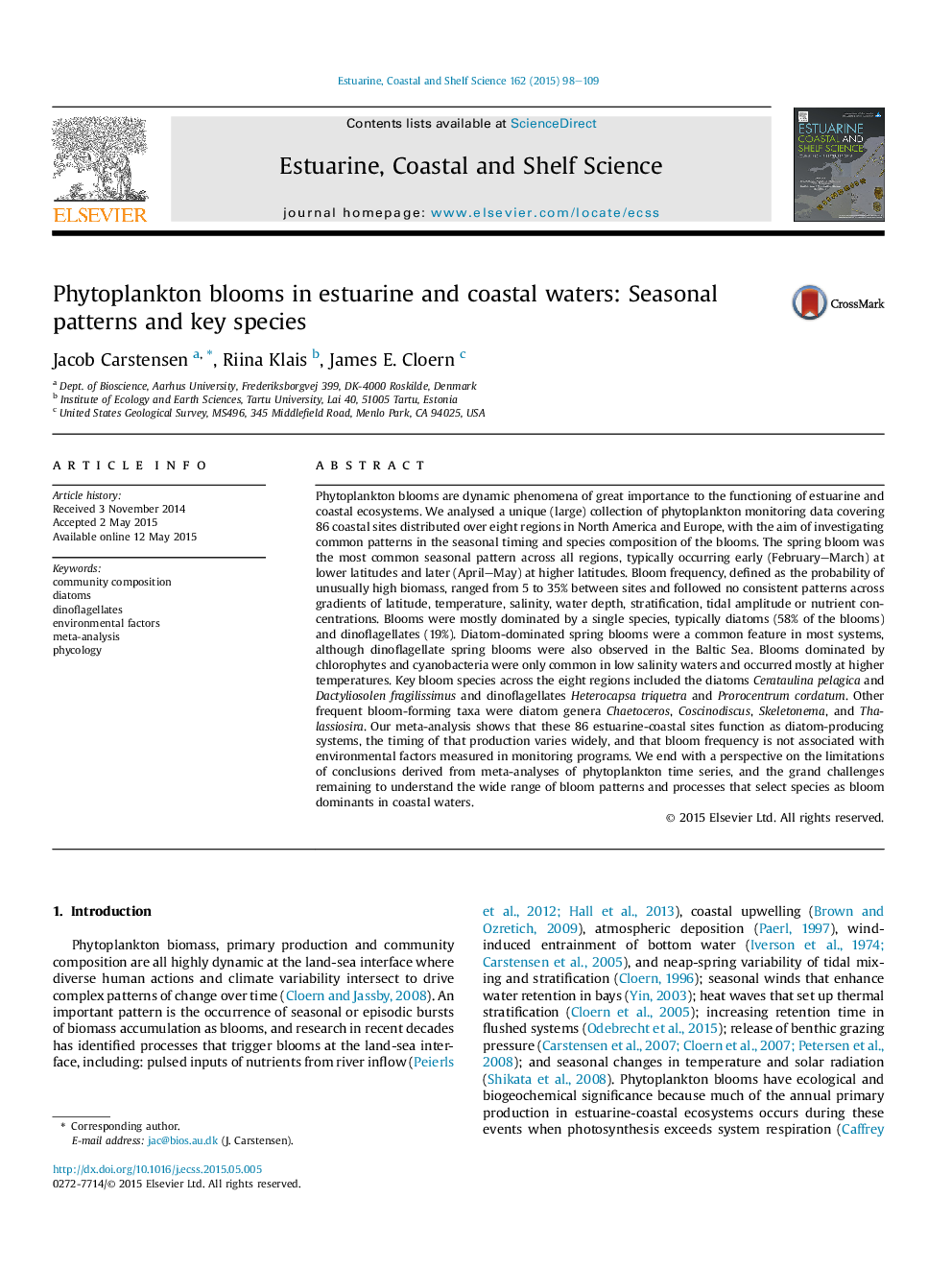| Article ID | Journal | Published Year | Pages | File Type |
|---|---|---|---|---|
| 4539451 | Estuarine, Coastal and Shelf Science | 2015 | 12 Pages |
Phytoplankton blooms are dynamic phenomena of great importance to the functioning of estuarine and coastal ecosystems. We analysed a unique (large) collection of phytoplankton monitoring data covering 86 coastal sites distributed over eight regions in North America and Europe, with the aim of investigating common patterns in the seasonal timing and species composition of the blooms. The spring bloom was the most common seasonal pattern across all regions, typically occurring early (February–March) at lower latitudes and later (April–May) at higher latitudes. Bloom frequency, defined as the probability of unusually high biomass, ranged from 5 to 35% between sites and followed no consistent patterns across gradients of latitude, temperature, salinity, water depth, stratification, tidal amplitude or nutrient concentrations. Blooms were mostly dominated by a single species, typically diatoms (58% of the blooms) and dinoflagellates (19%). Diatom-dominated spring blooms were a common feature in most systems, although dinoflagellate spring blooms were also observed in the Baltic Sea. Blooms dominated by chlorophytes and cyanobacteria were only common in low salinity waters and occurred mostly at higher temperatures. Key bloom species across the eight regions included the diatoms Cerataulina pelagica and Dactyliosolen fragilissimus and dinoflagellates Heterocapsa triquetra and Prorocentrum cordatum. Other frequent bloom-forming taxa were diatom genera Chaetoceros, Coscinodiscus, Skeletonema, and Thalassiosira. Our meta-analysis shows that these 86 estuarine-coastal sites function as diatom-producing systems, the timing of that production varies widely, and that bloom frequency is not associated with environmental factors measured in monitoring programs. We end with a perspective on the limitations of conclusions derived from meta-analyses of phytoplankton time series, and the grand challenges remaining to understand the wide range of bloom patterns and processes that select species as bloom dominants in coastal waters.
